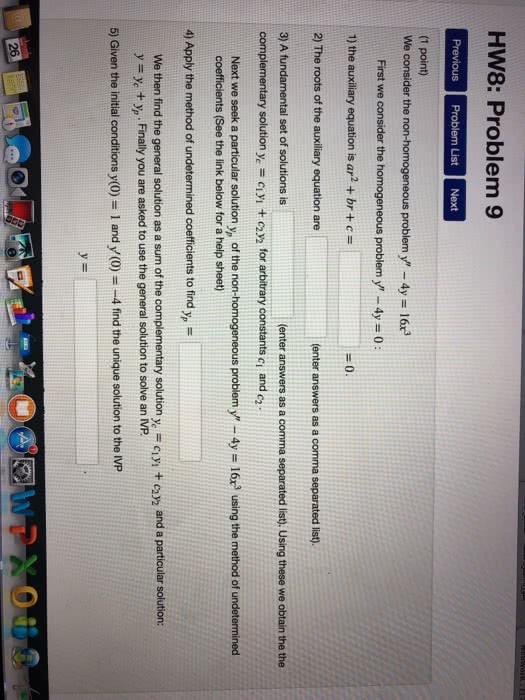MTHE 225 Study Guide - Quiz Guide: Unit Circle
Document Summary
Quiz 3a solutions: this question concerns second-order linear homogeneous equations. Show your work. (a) find two linearly independent solutions of y + 6y + 9y = 0. The characteristic equation is r2 + 6r + 9 = 0, which factors as (r + 3)2 = 0, so there is a double root r = 3. Thus two linearly independent solutions are given by y1 = e 3x , y2 = xe 3x (b) find the general solution of y + 4y = 0. The characteristic equation is r2 + 4 = 0, with complex conjugate roots r = 2i. Thus two linearly independent solutions are given by y1 = cos 2x , y2 = sin 2x and the general solution is y = c1y1 + c2y2. We might remember that the di erential equation is in the form x + 2 thus 0 = 2.

